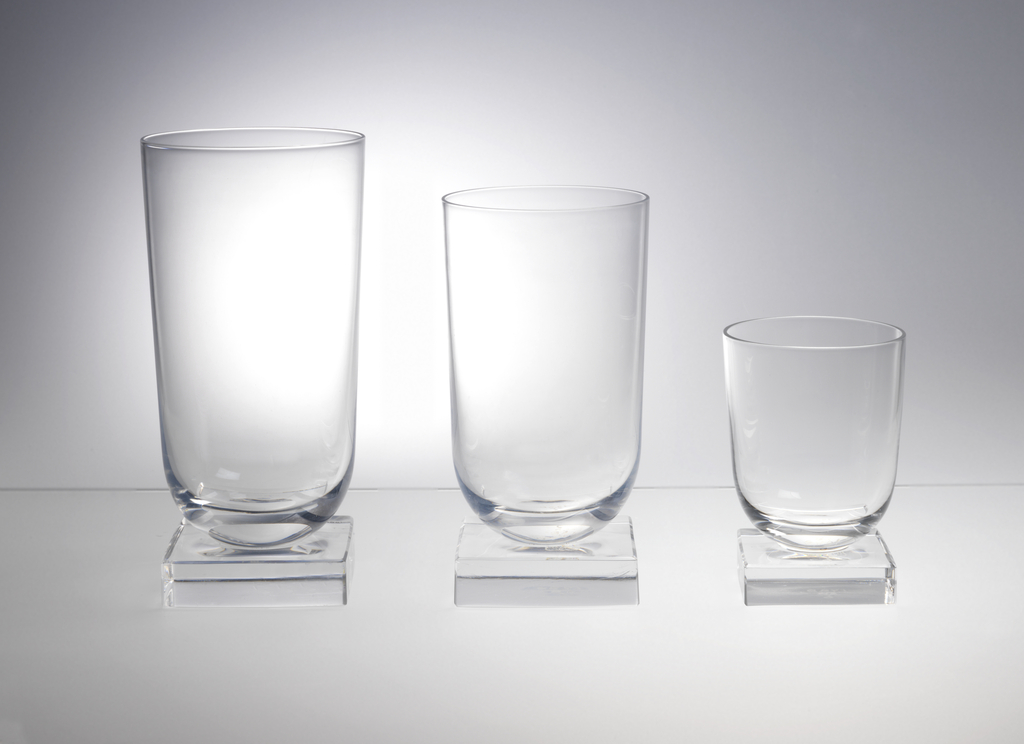During the height of the Great Depression, Libbey Glass Company, a commercial glass manufacturer based in Toledo, Ohio, released several new lines of stemware including this Knickerbocker set. The 1933 Libbey Glass catalog heralded this introduction of products as a “New Era of Glass” and promoted these objects as “the highest point that has yet been attained in the glassmaker’s art.”[1]
After World War I, cut glass largely fell out of style and the firm began to produce machine-made glassware for restaurants and bars. This commercial market provided long-lasting financial success for the company. Arthur Nash, the primary designer of this set of glassware and a former manager of Tiffany Furnaces, however, wanted to produce works that took on a more artistic quality and demonstrated Libby Glass’ ability to produce luxury glassware. As the 1933 catalog indicates, these products, sold under the “Libbey-Nash” label, were available in popular retail outlets, though the company produced a limited range. The original release of the Knickerbocker line included a twelve-ounce tumbler, a ten-ounce tumbler, a sherbet bowl, a cocktail glass, and a cordial glass. At an additional cost, the buyer could have his or her monogram etched into the glasses.
Each item merged a solid square base with the cup—a highly modern design at the time. In 1942, Libbey released additional products in the Knickerbocker line such as a sugar bowl and a cream pitcher, though they were not designed by Nash. The geometric forms and clean lines of this glassware reflect a machine aesthetic that was popular at the time, even though they were not actually produced by a machine. Although the Libbey Glass Company is most well-known for their mass-produced glassware, these works demonstrate the company’s capacity to produce works of exquisite craftsmanship.
Ben Green is a graduate student in the History of Design and Curatorial Studies program offered jointly by the Parsons School of Design and the Cooper Hewitt, Smithsonian Design Museum. He is a Fellow in the museum’s Product Design and Decorative Arts Department.
[1] The New Era of Crystal [catalog] (Toledo, Ohio: Libbey Glass Manufacturing Company, 1933), foreword.
